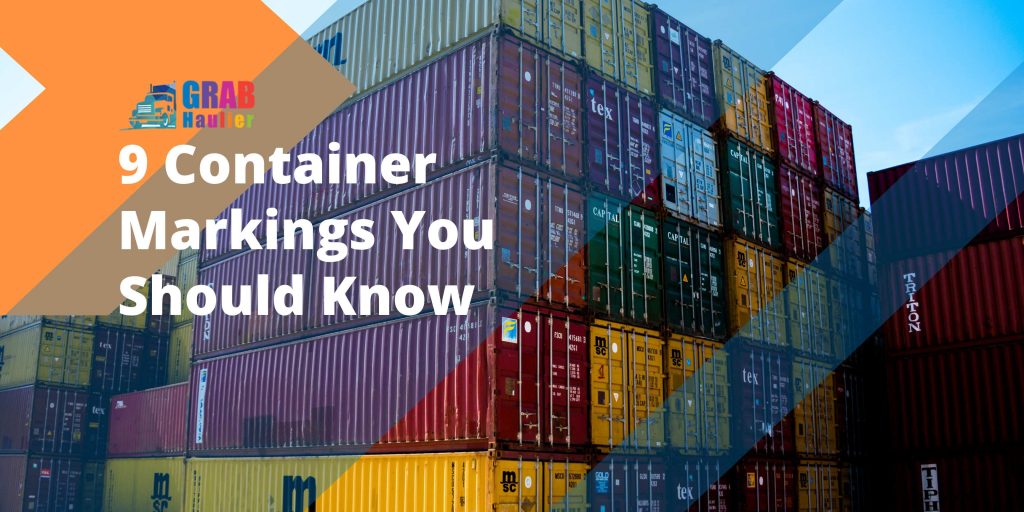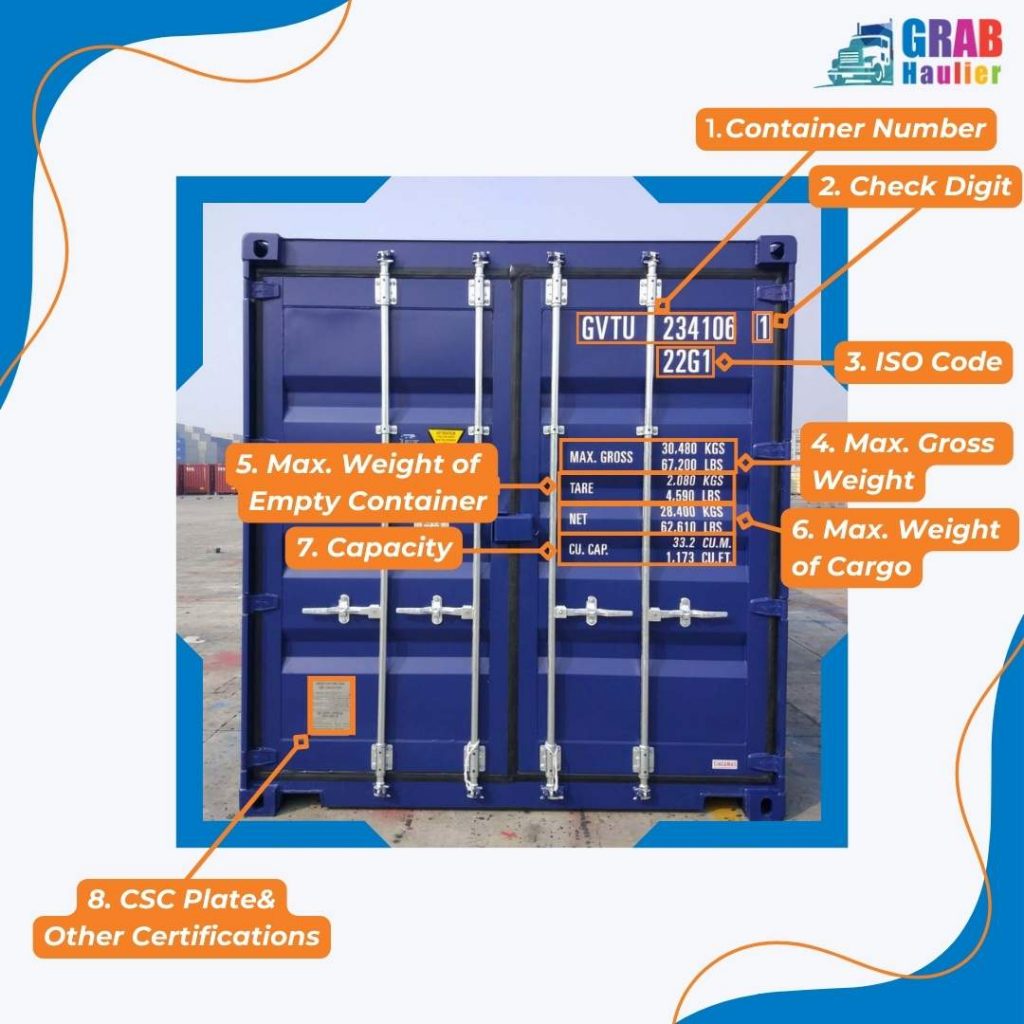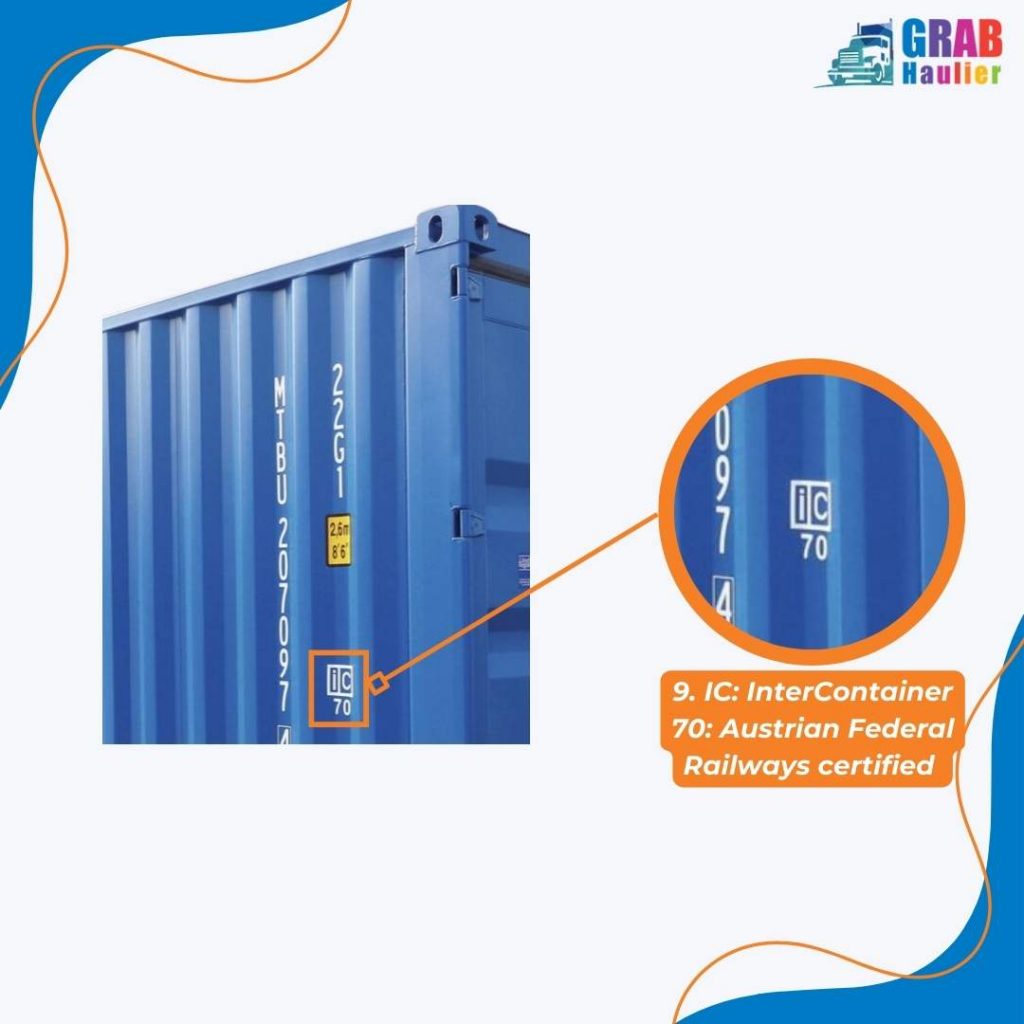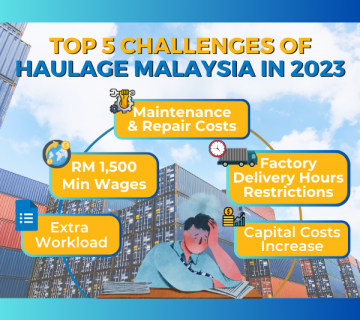Ready to Get Started?
Ship your cargo in transparent and cost-effective way with us, a Haulage expert from Port Klang.
Get Started
 Shipping containers have played a significant role in our lives as they are essential in safely moving items from point A to B. Exporters, importers, traders, border authorities, and freight forwarders all deal with containers daily. Thus, container markings are vital in providing information to all entities for identification and monitoring of container safety during delivery. We have summarized 9 shipping container markings you must know.
Shipping containers have played a significant role in our lives as they are essential in safely moving items from point A to B. Exporters, importers, traders, border authorities, and freight forwarders all deal with containers daily. Thus, container markings are vital in providing information to all entities for identification and monitoring of container safety during delivery. We have summarized 9 shipping container markings you must know.
1. Container Number
It is an alphanumeric sequence that is made up of 4 Alphabets and 7 Numbers. The container number is displayed on the top right part of the container door. Out of the 4 capital letters: the first 3 capital letters, “GVT” are the Owner code, while the 4th capital letter “U” is the Equipment Category Identifier. The serial number of the registration number consists of a 6 digit number, such as “234106”, that is determined by the owner. Check Digit is the solo number, namely the last digit after the “234106”.
2. Check Digit
Although it is part of the entire container number, the purpose of the check digit is to check the validity of the above-mentioned sequence.
3. ISO Code
The ISO code, typically seen below the container number, is a sequence of four characters or digits containing details on the container’s size and type. Each container is provided with a unique ISO code to avoid confusion in naming the container.
4. Max. Gross Weight
The maximum gross weight usually is around 30 metric tonnes. It represents the maximum weight the loaded container can carry inclusive of its own weight.
5. Max. Weight of Empty Container
The empty container weight (or tare weight) ranges from 4 to 10 metric tons. It is an important weight to be considered by all ship planners and operators as this is an essential factor in ship planning.
6. Max. Weight of Cargo
It is the maximum weight of cargo that can be packed into the container (The payload is the gross weight minus the tare weight). Do note that any misdeclaration of the weight by the customers incurs severe consequences.
7. Capacity in volume
The capacity in volume is the maximum cargo volume in the cubic capacity that can be packed into the container. Any misdeclaration of volume on a bill of lading could incur fines for the seller and buyer.
8. CSC Plate
The Convention for Safe Containers plate (CSC) is a metal plate installed on each shipping container to ensure the container has been inspected, is safe and fit for use by the approved authorities. It also includes information about the owners and other technical specifications.
9. IC Code
“IC” stands for “InterContainer”. It is an international railway safety certification. The number after the “IC” identifies the specific railway certification. For example, “IC61” means Korean National Railways, “IC70” means British Rail; “IC80” means Deutsche Bahn (German Railways), “IC81” means Austrian Federal Railways, “IC87” means SNCF (French National Railways).






